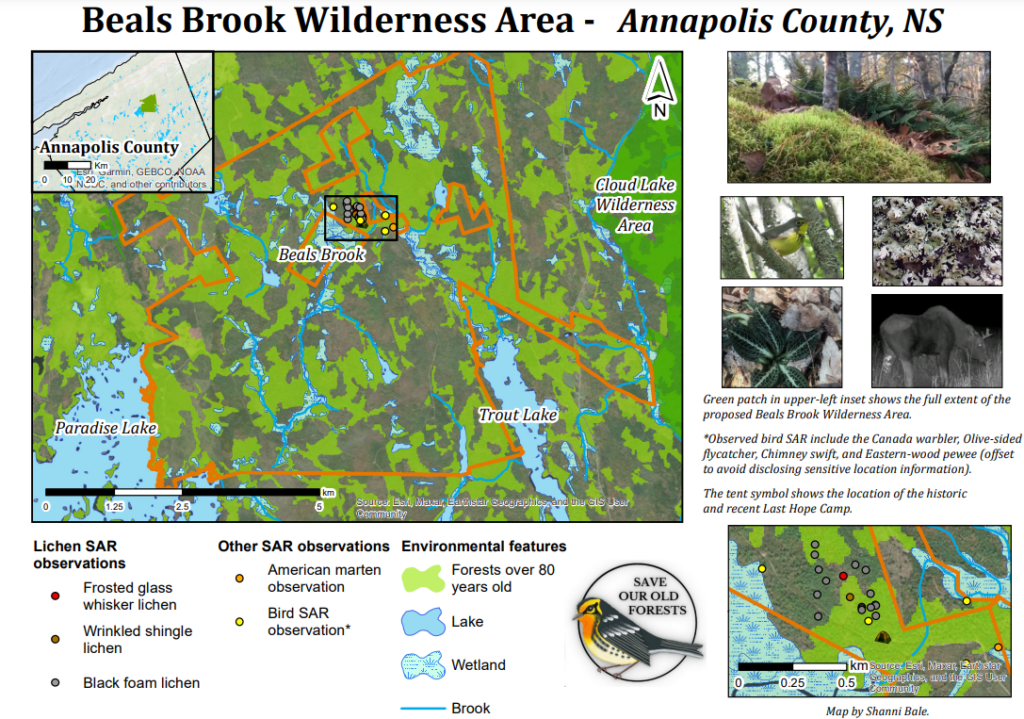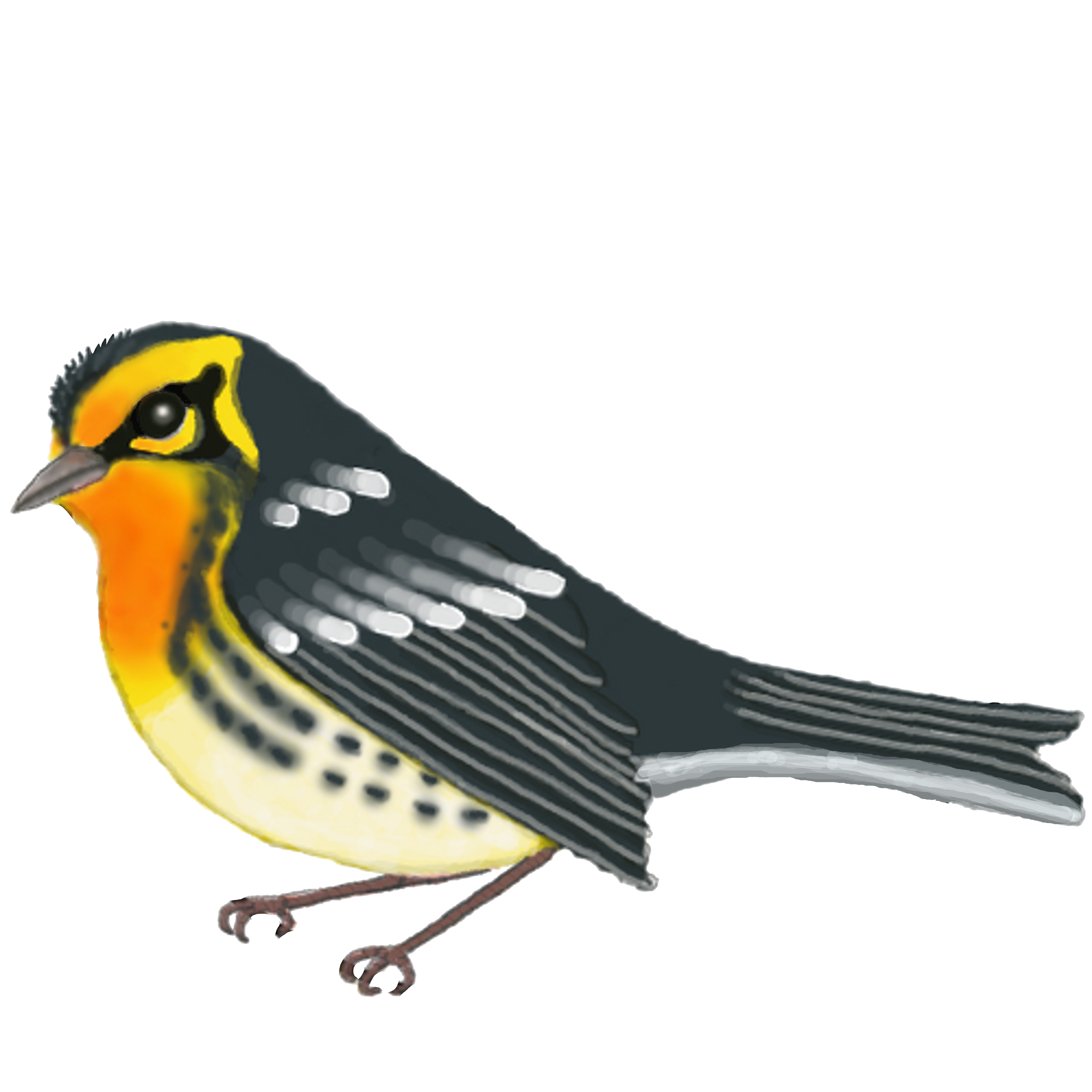"This isn't lumber country, it's moose country" Perry Munro, Master Guide

Twenty years ago, when Bowater Mersey owned the area and was clearcutting extensively, a local farmer and trapper persuaded them to spare the 24 hectare forest just to the west of Beals Brook because the trees weren’t worth much as lumber but they were essential to wildlife. Bowater agreed.
If protected the proposed Beals Brook Wilderness Area would encompass 3500 hectares of mature to old forests, wetlands and a mix of dry, rocky ridges and swampy hollows. The proposal also includes a narrow strip of Crown land that stretches across Highway 10 and would connect this area to the existing Cloud Lake Wilderness Area, improving ecological function.
The surviving intact mature to old forests provide connectivity between extensive stretches of wetland. These wetlands – Crisp Bog, McEwan Meadow, Beals Meadow, the Wet Meadow – are fed by and feed into a complex array of streams and lakes, all eventually emptying into the Annapolis River. The central area of the proposed protected area, to the north of Snowshoe Lake, can only be accessed by canoe and that involves a fair amount of portaging.
A rare area of old forest unbroken by logging roads exists between Beals Brook and McEwen Lake. This includes a magnificent stand of Sugar Maple approximately 120 years in age. Another band of larger, older trees exists to the west of Beals Brook and the old stagecoach road that now leads north to Inglisville Road. These include many large Red Oak, the biggest being 91cm DBH (diameter at breast height), as well as large Red Spruce and Beech. Old trees, notably Red Maple, persist in some of the many wooded wetlands. Much of the rest of the intact forest in the proposed area is mature at best and less than magnificent, as a result of a wildfire that came through the area 80 years ago as well as the generally poor, acidic soil.
Glaciers carved out the dry, rocky ridges and swampy hollows when they retreated at the end of the last Ice Age. As it turns out, these swampy hollows are also critically important to biodiversity in this area, so long as the forest around them remains undisturbed.
SPECIES AT RISK (SAR) AT Beals brook
Citizen Scientists have identified, confirmed and reported sightings of the following Species At Risk in the Beals Brook Wilderness Area:
- Black foam lichen (Anzia colpodes)
- Wrinkle shingle lichen (Pannaria lurida) plumbea)
- Frosted glass-whisker lichen (Sclerophora peronella)
- Canada warbler (Cardellina canadensis)
- Olive-sided flycatcher (Contopus cooperi)
- Eastern wood pewee (Contopus virens)
- Chimney swifts (Chaetura pelagica)
Endangered Species at Beals Brook
The combination of wetlands and surviving forests 80 years old and older in the Beals Brook Wilderness Area is critical to the survival of all species dependent on old forests. The following endangered species have all been observed in the borders of the proposed protected area:
Mainland Moose (Alces alces americana): Although the area falls just outside the Core Habitat areas identified in the province’s Mainland Moose Recovery Plan, a trail camera photo shows has documented a young Moose grazing in Beals Meadow in September 2020. A local resident has also mapped numerous locations of moose scat and tracks he has observed in the proposed protected area over the last two decades.
American Marten (Martes americana): Already declared a Species at Risk in Cape Breton, this Marten is apparently about to be declared at risk in the whole province. It is known to be present in the area around Beals Brook. In addition to reports of tracks from 2021 and 2022, an American Marten was sighted by two different witnesses crossing one of the bridges over Beals Brook in April of 2022.
Rusty Blackbird (Euphagus carolinus nigrans): There were two audio observations of the Rusty Blackbird in Beals Meadow in April and May 2022.
local history
This is a storied landscape, from the African-Canadian history of Mary Brown and her husband who abandoned Shelburne to homestead near the headwaters of Beals Brook to the Last Hope hunting camp to the local men who ensured that the forests around McEwan Lake remained uncut by destroying bridges put in to access the area in the 1970s and again less than ten years ago. Add to that the 6 months citizens camped out through the brutal winter of 2021-2022 to protect the forest by Beals Brook and you have a story to tell about this area and why people care about it.
